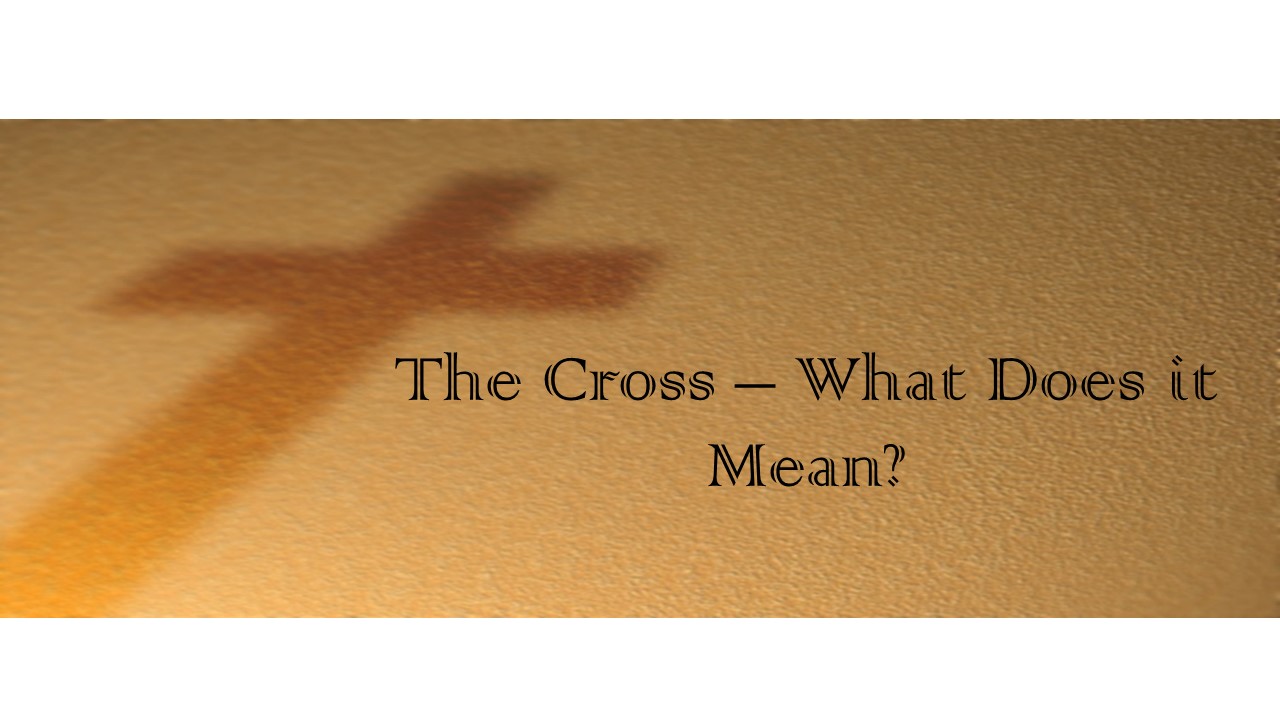Notes on the Notes – March 26, 2017

LENT 4
New Light in Christ
This week’s scripture:
Ephesians 5:8-14 – You were in darkness, but since you have become the Lord’s people, you are in the light.
John 9:1-41 – Jesus heals a blind man
This week’s music:
“I Love to Tell the Story” (VU #343)
I love to tell the story of unseen things above,
Of Jesus and his glory, of Jesus and his love.
I love to tell the story, because I know ’tis true;
It satisfies my longings as nothing else can do.
I love to tell the story, ’twill be my theme in glory,
To tell the old, old story of Jesus and his love.
I love to tell the story, more wonderful it seems
Than all the golden fancies of all our golden dreams.
I love to tell the story, for some have never heard
The message of salvation from God’s own holy Word.
I love to tell the story, for those who know it best
Seem hungering and thirsting to hear it like the rest.
And when, in scenes of glory, I sing the new, new song,
‘Twill be the old, old story that I have loved so long.”
Arabella Katherine Hankey (1834-1911) grew up in the family of a wealthy English banker associated with the evangelical wing of the Anglican Church. As a teenager she taught a girls’ Sunday school class. Later she traveled to South Africa to serve as a nurse and to assist her invalid brother.
While recovering from a lengthy illness of her own at age 30, she wrote a poem on the life of Christ. This poem had two sections, the first published in January 1866 and entitled The Story Wanted, the second published later that year in November under the title The Story Told. The hymn “I Love to Tell the Story” is drawn from stanzas in the second section. The text of the refrain was written by the composer of the music, William G. Fisher, in 1869.
Hear the Chuck Wagon Gang at: https://youtu.be/-xgbsC_zL50
Hear Eddy Arnold sing the hymn at: https://youtu.be/0BE_SryWgNY
Hear country singer Alan Jackson at: https://youtu.be/wpfsZZ9X5n8
“Open My Eyes” (VU #371)
“Open my eyes, that I may see glimpses of truth thou hast for me;
place in my hand the wonderful key that shall unclasp and set me free.
Silently now I wait for thee, ready, my God, thy will to see.
Open my eyes, illumine me, Spirit Divine!
Open my ears, that I may hear voices of truth thou sendest clear;
and while the wave-notes fall on my ear, everything false will disappear.
Silently now I wait for thee, ready, my God, thy will to see.
Open my ears, illumine me, Spirit Divine!
Open my mouth, and let me bear gladly the warm truth everywhere;
open my heart and let me prepare love with thy children thus to share.
Silently now I wait for thee, ready, my God, thy will to see.
Open my heart, illumine me, Spirit divine!”
Clara H. Scott (1841-1897) provides us with a hymn of consecration that has been sung for over 100 years. A Midwesterner, she was born in Illinois and died in Iowa.
In 1856, Scott attended the first Music Institute held by C.M. Cady in Chicago, Ill. By 1859, she was teaching music at the Ladies’ Seminary, Lyons, Iowa. She married Henry Clay Scott in 1861, and published in 1882 the Royal Anthem Book, the first volume of choir anthems published by a woman.
Horatio R. Palmer, an influential church musician in Chicago and later New York City, was a source of encouragement for Scott, and helped her publish many of her songs. Three collections were issued before her untimely death, when a runaway horse caused a buggy accident in Dubuque, Iowa.
The text of “Open My Eyes” was written in 1895 shortly before Scott’s death. Each stanza reveals an increasing receptiveness to the “Spirit divine.” Open eyes lead to “glimpses of truth.” Open ears lead to “voices of truth.” An open mouth leads to sharing the “warm truth everywhere.” An open heart leads to sharing “love to thy children.”
The image of open eyes is common in the Bible. In some cases, this is a sign of Christ’s healing power, as when Jesus gave sight to the blind man at the pool of Siloam in John 9. Closed eyes, on the other hand, could be a metaphor for avoiding the truth as in the case of John 12:40, a passage following the triumphal entry of Christ into Jerusalem and beginning his journey to the cross: “He hath blinded their eyes, and hardened their heart; that they should not see with their eyes, nor understand with their heart, and be converted, and I should heal them.”
The image of open ears is also significant in the biblical witness. Matthew often reprises the theme “Who hath ears to hear, let him hear.” Closed ears become a metaphor for a lack of understanding. While the eyes and the ears are receptive organs, the mouth has the capacity to project. The mouth may project “cursing and deceit and fraud” (Psalm 10:7), or it may be an organ that projects praise, as Psalm 51:15 exhorts us: “O Lord, open thou my lips; and my mouth shall show forth thy praise.”
Sing along with the choir at First United Methodist Church in Valdosta, Georgia at: https://youtu.be/71jExPuxRBY
“The Lord’s My Shepherd” (VU #747)

“The Lord’s my Shepherd, I’ll not want;
He makes me down to lie in pastures green;
He leadeth me, the quiet waters by.
My soul he doth restore again;
And me to walk doth make within the paths of righteousness,
Even for his own name’s sake.
Yea, though I walk in death’s dark vale,
Yet will I fear no ill;
For thou art with me; and thy rod and staff me comfort still.
My table thou hast furnished in presence of my foes;
My head thou dost with oil anoint, and my cup overflows.
Goodness and mercy all my life shall surely follow me;
And in God’s house for evermore my dwelling-place shall be.”
Jessie Seymour Irvine (1836–1887) was the daughter of a Church of Scotland parish minister who served at Dunottar, Peterhead, and Crimond in Aberdeenshire, Scotland. Her most famous tune is CRIMOND, which is best known as one of the most popular settings for the (paraphrased) words of Psalm 23: “The Lord’s my Shepherd”. It is believed that Irvine wrote the tune while still in her teens, as an exercise for an organ class she was attending. The tune first appeared in The Northern Psalter where it was credited to David Grant. It was subsequently revealed, however, that Grant had only arranged and not composed the tune, and the 1929 Scottish Psalter credits Irvine.
Sing along at: https://www.youtube.com/watch?v=qZnj8yifvsw
“Amazing Grace (My Chains are Gone)” 
“Amazing grace! how sweet the sound that saved a wretch like me! I once was lost, but now am found, was blind, but now I see.
‘Twas grace that taught my heart to fear, and grace my fears relieved; how precious did that grace appear the hour I first believed!
My chains are gone, I’ve been set free. My God, my Savior has ransomed me, and like a flood, his mercy reigns; unending love, amazing grace.
The Lord has promised good to me, his word my hope secures; he will my shield and portion be as long as life endures.
My chains are gone…”
Today’s anthem “Amazing Grace (My Chains are Gone)” is a choral setting by Joel Raney of Chris Tomlin’s Praise and Worship Song from 2006. The original “Amazing Grace” was written by the English poet and clergyman John Newton (1725-1807), published in 1779. Containing a message that forgiveness and redemption are possible regardless of sins committed and that the soul can be delivered from despair through the mercy of God, “Amazing Grace” is one of the most recognizable songs in the English-speaking world.
Newton wrote the words from personal experience. He grew up without any particular religious conviction, but his life’s path was formed by a variety of twists and coincidences that were often put into motion by his recalcitrant insubordination. He was pressed (forced into service involuntarily) into the Royal Navy, and after leaving the service became involved in the Atlantic slave trade. In 1748, a violent storm battered his vessel so severely that he called out to God for mercy, a moment that marked his spiritual conversion. However, he continued his slave trading career until 1754 or 1755, when he ended his seafaring altogether and began studying Christian theology.
Ordained in the Church of England in 1764, Newton began to write hymns with poet William Cowper. “Amazing Grace” was written to illustrate a sermon on New Year’s Day of 1773. It is unknown if there was any music accompanying the verses; it may have simply been chanted by the congregation. It debuted in print in 1779 in Newton and Cowper’s Olney Hymns, but settled into relative obscurity in England. In the United States however, “Amazing Grace” was used extensively during the Second Great Awakening in the early 19th century. It has been associated with more than 20 melodies, but in 1835 it was joined to a tune named “New Britain” to which it is most frequently sung today.
“Amazing Grace” is “without a doubt the most famous of all the folk hymns,” and it is estimated that it is sung 10 million times a year.
Hear Chris Tomlin sing the song at: http://www.youtube.com/watch?v=Jbe7OruLk8I
“O Master, Let Me Walk with Thee” (VU #560)
“O Master, let me walk with thee in lowly paths of service free;
Teach me thy secret, help me bear the strain of toil, the fret of care.
Help me the slow of heart to move with some clear, winning word of love;
Teach me the wayward feet to stay, and guide them in the homeward way.
Teach me thy patience; still with thee, in closer, dearer company,
In work that keeps fiath sure and strong, in trust that triumphs over wrong,
In hope that sends a shining ray far down the future’s broadening way,
In peace that only thou canst give, with thee, O Master, let me live.”
The author, Washington Gladden, was an American Congregational minister and a leader of the social gospel movement. This text, from a devotional poem entitled “Walking with God,” was first published in his periodical, The Sunday Afternoon (1879). It was not originally intended to be set as a hymn, but was meant as a daily devotion. The text comes from a period of religious history in the United States when there was much emphasis given to the social implications of the Gospel. The Civil War had ended and the country was in the throes of a great industrial revolution. The tune, MARYTON, was composed by Henry Percy Smith, a Church of England vicar.
Hear Amy Grant sing the hymn at: https://youtu.be/kJbG3z2Wzl4
Hear the hymn on piano at: https://youtu.be/7wqKAErm8XA
Categories: Notes on the Notes


You must be logged in to post a comment.